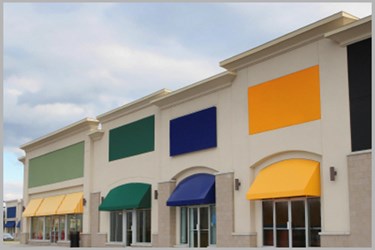Restaurant and Hospitality IT News for VARs—October 1, 2013

By Anna Rose Welch, Editorial & Community Director, Advancing RNA

This week, reconfiguring the lobby is a trend for hotels, restaurant stats show “bright spots,” and UK restaurants are finding creative ways to use technology to engage with customers.
Hotel Lobby Renovations Follow Trend
Lobby renovations in the style of luxury and boutique hotels are a current trend for hotels, according to The Journal Gazette. Companies like Marriott, Starwood, and Hyatt are considering the renovations — that could include WiFi or other technology — important to appeal to younger guests and leave guests with a better feeling about their stay. According to Bjorn Hanson, dean of NYU’s hospitality program, hotels are expected to spend $5.6 billion in capital improvements — with a portion of that amount going toward lobby reconfiguration. Hotel owners claim that these renovations benefit the hotels financially because alcohol sales increase and hotels can charge higher room rates.
“Bright Spots” In The Restaurant Industry
The NPD Group reports that, while second calendar quarter restaurant traffic increased 1 percent compared to 2012, food service traffic is at the 2009 level of 15.7 billion. Quick-service restaurants and fine dining/upscale hotel restaurants both showed traffic increases of 1 percent and 6 percent respectively. Casual dining held steady, while mid-scale/family dining continued to decrease, down 2 percent in the second quarter.
2013 Restaurant Visits Leveling Off Vs. 2012 Data
In April, the Harris Interactive poll found that 64 percent of Americans had dined at a fast food chain in March. The poll also reveals 54 percent reported dining at local dining establishments and 52 percent in a casual dining chain. In addition, the poll shows that, while Americans are cutting back on eating out, those who responded they go to restaurants “less frequently” decreased from March 2012. Other aspects revealed from the poll include factors in choosing a restaurant and preferred cuisine at the national and regional levels.
UK Restaurants Expands Use Of Technology
QSRweb.com profiles five ways restaurants are using technology in the UK to engage with customers. Not only are some restaurants in the UK using tablets as interactive menus and a means of placing orders, some also provide game consoles to ease the wait. Live kitchen cameras, interactive menus, and the elimination of table service in favor of chip cards are also important advancements occurring in the UK restaurant industry.
Hospitality IT Talking Points
Michael Hemsey for MediaPost argues that analyzing loyalty program data is key for marketers looking to keep customers engaged with a brand. He provides several suggestions for how to incorporate loyalty program data into a brand’s marketing strategy to make a brand more competitive. Some of these suggestions include giving loyalty members chances to test and offer feedback on new products and making loyalty part of the brand’s promise.
Pete Rizzo on Pymnts.com presents an interview with two experts about opportunities facing QSRs considering mobile payment options. Ken Paull, CEO of ROAM, and Noah Glass, CEO of OLO, claim the mobile payment industry could provide QSR customers with self-service opportunities and reduce customer wait time. In addition, Paull and Glass answer questions about the forces driving the QSR mobile shift and how QSRs can accommodate this shift. The article also includes a podcast in which Paull and Glass give advice to QSRs considering going mobile.
Youri Saweschel, in a tnooz Special Nodes byline, argues that hotels should “gamify” their loyalty programs. Saweschel claims that hotel loyalty programs are due for a change, stating that most loyalty program tiers do not foster a direct, social connection with guests. Overall, Saweschel believes that if a loyalty program encouraged competition between customers, guests would not only be more empowered, but a hotel could also draw more business.
Snagajob’s seasonal hiring survey predicts that more seasonal jobs should be available for holiday job seekers this year. According to the data, 69 percent of managers will be hiring this year, up from 63 percent in 2012. Hiring managers expect to hire an average of 7.8 workers, an increase from last year when managers hired 6.1 seasonal workers. This surge in hiring is linked to an 8-point improvement in hiring managers’ expectations for increasing sales. Managers are expecting that 52 percent of seasonal hires will be able to stay as a permanent employee after the holiday season. The press release also contains data tables for all six surveys from 2008-2013.
